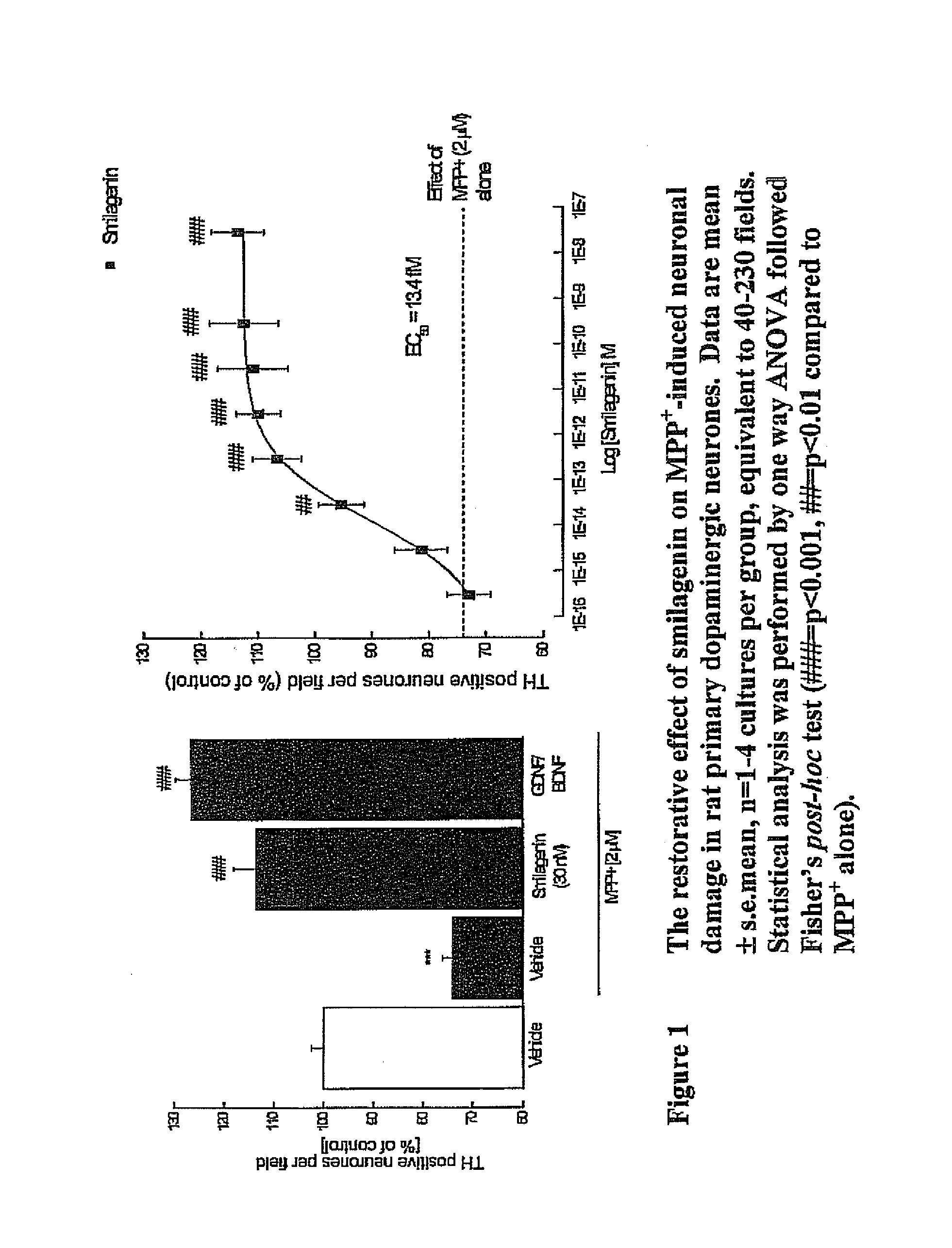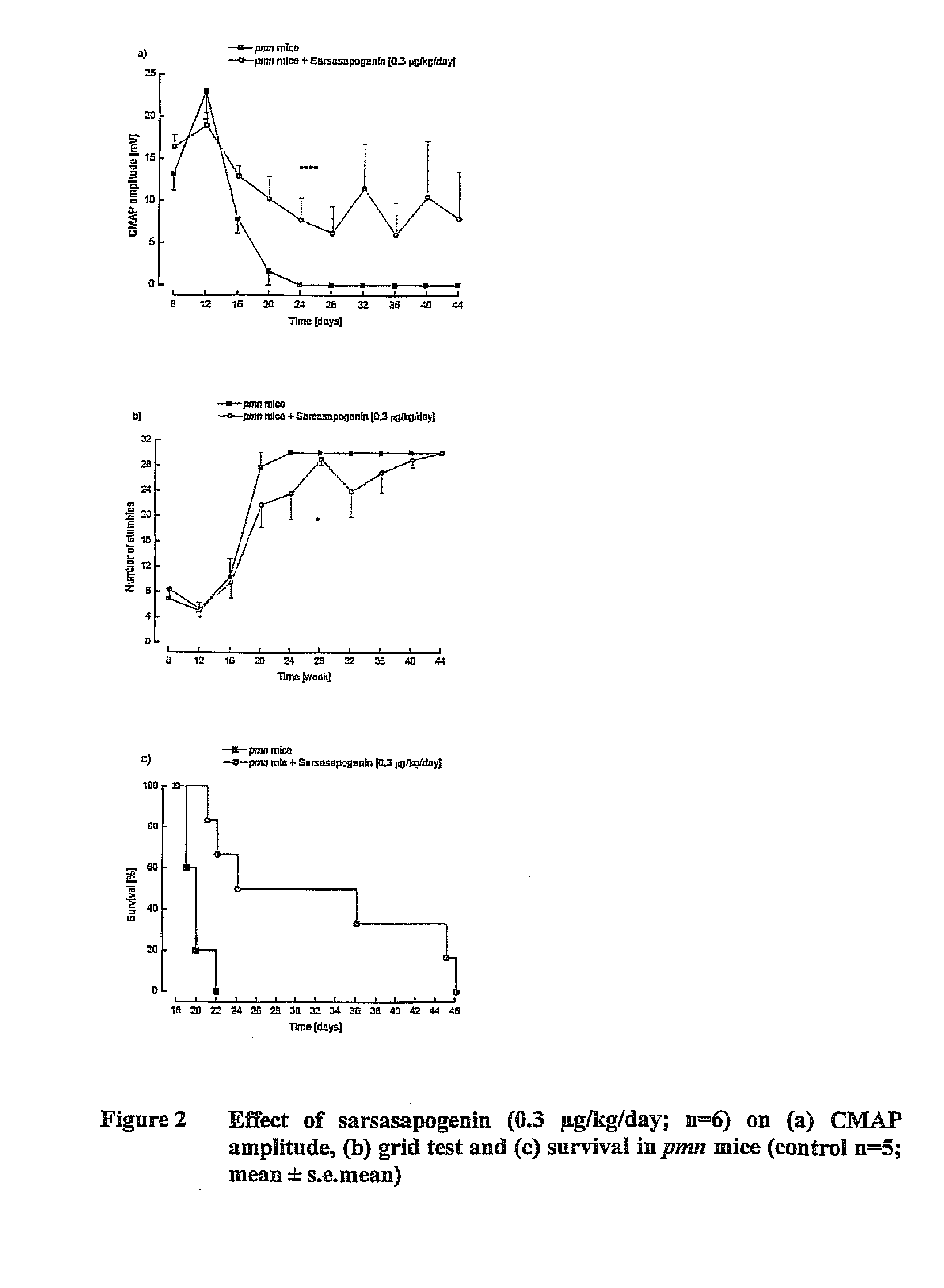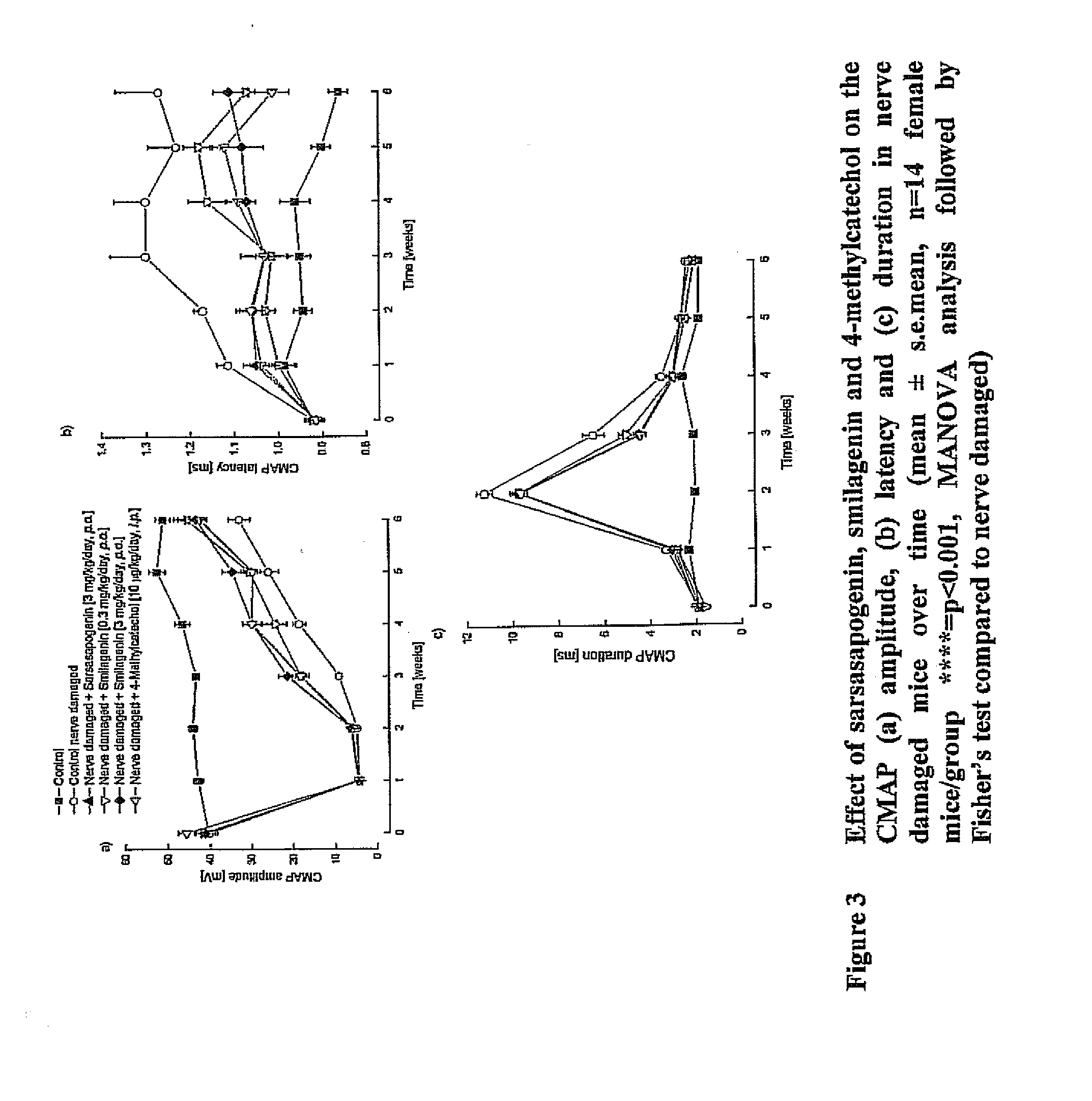Treatment of neurotrophic factor mediated disorders
a neurotrophic factor and mediated disorder technology, applied in the direction of immunological disorders, drug compositions, metabolism disorders, etc., can solve the problems of toxic side effects, limited potential of agents developed to provide marketed drugs to treat or prevent neurological and psychiatric disorders, and toxic side effects of agents, so as to improve brain function or cellular function, improve the survival rate of transplanted material or the effect of
- Summary
- Abstract
- Description
- Claims
- Application Information
AI Technical Summary
Benefits of technology
Problems solved by technology
Method used
Image
Examples
example 1
Sarsasapogenin and Smilagenin do not Bind to Several Enzymes and Receptors
[0238]The effect of sarsasapogenin on the activity of the enzymes listed in Table 1 below, and the binding of sarsasapogenin to the receptors listed in Table 1 below, were investigated.
[0239]The enzyme activity modulation was investigated using the following method: Sarsasapogenin was incubated with each enzyme plus a specific substrate for each enzyme. After the incubation period the reaction was stopped and the reduction of the specific substrate or the increase in a specific product in the absence and presence of sarsasapogenin was measured and the percent inhibition of the reaction in the presence of sarsasapogenin was calculated. The amount of enzyme used, the incubation conditions, the substrate used and the method of quantification varied depending on each specific assay.
[0240]The receptor binding was investigated using the following method: Sarsasapogenin was incubated with tissue or cell homogenate th...
example 2
Sarsasapogenin and Smilagenin Transiently Increase Neurotrophic Factor mRNA in Cultured Neurones Under Basal Conditions In Vitro
[0244]Using specialised media and conditions, freshly isolated neurones can be cultured in vitro; the in vitro environment is different from the physiological one, resulting that the neurones are more stressed and suffer neuronal damage. The level of neuronal damage will vary from culture to culture depending on the precise conditions used. The level of neuronal damage can then be significantly increased by the addition of a pathological agent (e.g. β-amyloid or MPP+).
[0245]Rat cortical neurones were cultured by modification of a method previously described (Singer, et al., Neuroscience Letters, 1996, 212, pp. 13-16). Twelve days after the start of culturing, sarsasapogenin (30 nM), smilagenin (30 nM), 4-methylcatechol (0.5 mM), an inducer of NGF and BDNF release (Saporito et al., Experimental Neurology., 1993, 123, pp. 295-302; Nitta et al., Journal of Pha...
example 3
Smilagenin Causes a Significant Increase in Neurotrophic Factor mRNA Expression in Cultured Neurones Exposed to a Pathological Agent In Vitro
[0251]Smilagenin Increases BDNF mRNA in Cortical Neurones Previously Exposed to β-Amyloid
[0252]Rat cortical neurones were cultured by modification of a method previously described (Eckenstein and Sofroniew, Journal of Neuroscience, 1983, 3, pp. 2286-2291). On day 8, the culture medium was changed to a medium containing vehicle (DMSO, 0.5%) or smilagenin (10 μM). On day 10, rat primary cortical neurones were exposed to β-amyloid (10 μg / ml) for up to 48 h at 37° C. and the level of BDNF mRNA in the cortical neurones was assessed by rt RT-PCR over the following 48 h.
[0253]The results are shown in Table 5 below.
TABLE 5Pre-incubation with smilagenin for 48 h followed by exposureto β-amyloid increases BDNF mRNA in rat cortical neuronesRelative amount of BDNF mRNALength of(% of control at 0 h)β-amyloidVehicle + β-amyloidSmilagenin (10 μM) + β-amyloide...
PUM
 Login to View More
Login to View More Abstract
Description
Claims
Application Information
 Login to View More
Login to View More - R&D
- Intellectual Property
- Life Sciences
- Materials
- Tech Scout
- Unparalleled Data Quality
- Higher Quality Content
- 60% Fewer Hallucinations
Browse by: Latest US Patents, China's latest patents, Technical Efficacy Thesaurus, Application Domain, Technology Topic, Popular Technical Reports.
© 2025 PatSnap. All rights reserved.Legal|Privacy policy|Modern Slavery Act Transparency Statement|Sitemap|About US| Contact US: help@patsnap.com



